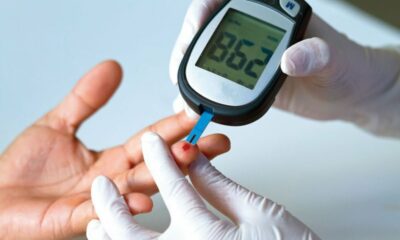Getting up and moving might be the secret to maintaining low blood sugar, and even a little stroll right after meals will assist in lowering blood sugar.
A recent review of seven research comparing the impact of sitting versus standing on metrics including blood sugar, insulin, and heart health was published in the journal Sports Medicine. The findings indicate that even a brief, easy stroll following a meal, lasting between two and five minutes, can significantly regulate blood sugar levels. Conversely, the findings also indicate that sitting for extended periods of time can be detrimental to metabolic and cardiovascular health.
The trials looked at the health effects of sitting combined with regular brief periods of standing and light-intensity walking over the course of a single day as opposed to a protracted sitting condition. Seven distinct trials’ worth of data shown that standing for short periods of time between sitting sessions helped adults over the age of 18 who were overweight lower their blood glucose levels. It did not significantly affect blood pressure or insulin. When compared to extended durations of sitting, light-intensity walking breaks have been demonstrated to considerably lower glucose and insulin levels.
An indicator of diabetes risk to consider is blood sugar levels. In five of the examined trials, participants without Type 2 diabetes or pre-diabetes were examined. Some participants in the remaining two investigations had either or both. Over the course of a full day, participants were encouraged to alternate between standing and walking for two to five minutes every 20 to 30 minutes.
For what reason do standing and walking lower blood sugar levels?
“Physical activity plays a crucial role in regulating glucose metabolism in the body,” explains Kelsey Hutter, dietitian and Diabetes Care and Education Specialist with Allegheny Health Network (AHN). “During physical activity, the muscles require increased energy to contract and perform work. When we engage in physical activity, our muscles use glucose as a primary energy source.”
The pancreas secretes the vital hormone insulin, which lowers blood glucose levels by facilitating the transfer of glucose from the blood into cells. Insulin sensitivity rises and blood glucose levels fall as a result of this.
Although modest walking is beneficial for your health at any time, the studies indicated that walking within 60 to 90 minutes after eating has the best advantages.
“Anytime you move, your skeletal muscles contract and muscle contractions improve insulin sensitivity,” says Hutter. “When you spend too much time sitting, you lose the opportunity to contract your muscles and improve insulin sensitivity.”
Hutter advises her patients to follow the American Diabetes Association’s recommendations for physical activity, which suggest walking or light resistance training every 30 minutes in place of extended sitting. According to those recommendations, three days a week of at least 150 minutes of moderate-to-intense aerobic exercise are recommended. Three times a day, for a total of thirty minutes most days, aerobic sessions should last at least ten minutes.
“It takes planning and effort to increase movement and activity in your day,” says Hutter. “It is important to evaluate your environment at the workplace and at home and to use technology to help remind you to add more activity in your day.”
Some pointers to begin going:
At work: Request a standing desk and establish the practice of standing up when someone calls. If you work from home, you might want to get a treadmill desk.
At home: Reduce screen time and work out while binge-watching your favorite show on television.
Technology: Wearables and phone apps can serve as helpful reminders to move more, stand up a lot, and go for quick walks.

 General Medicine1 week ago
General Medicine1 week ago
 Diabetology2 weeks ago
Diabetology2 weeks ago
 Diabetology2 weeks ago
Diabetology2 weeks ago
 General Medicine1 week ago
General Medicine1 week ago
 Diabetology5 days ago
Diabetology5 days ago
 Diabetology5 days ago
Diabetology5 days ago
 Diabetology3 days ago
Diabetology3 days ago
 Diabetology5 days ago
Diabetology5 days ago















